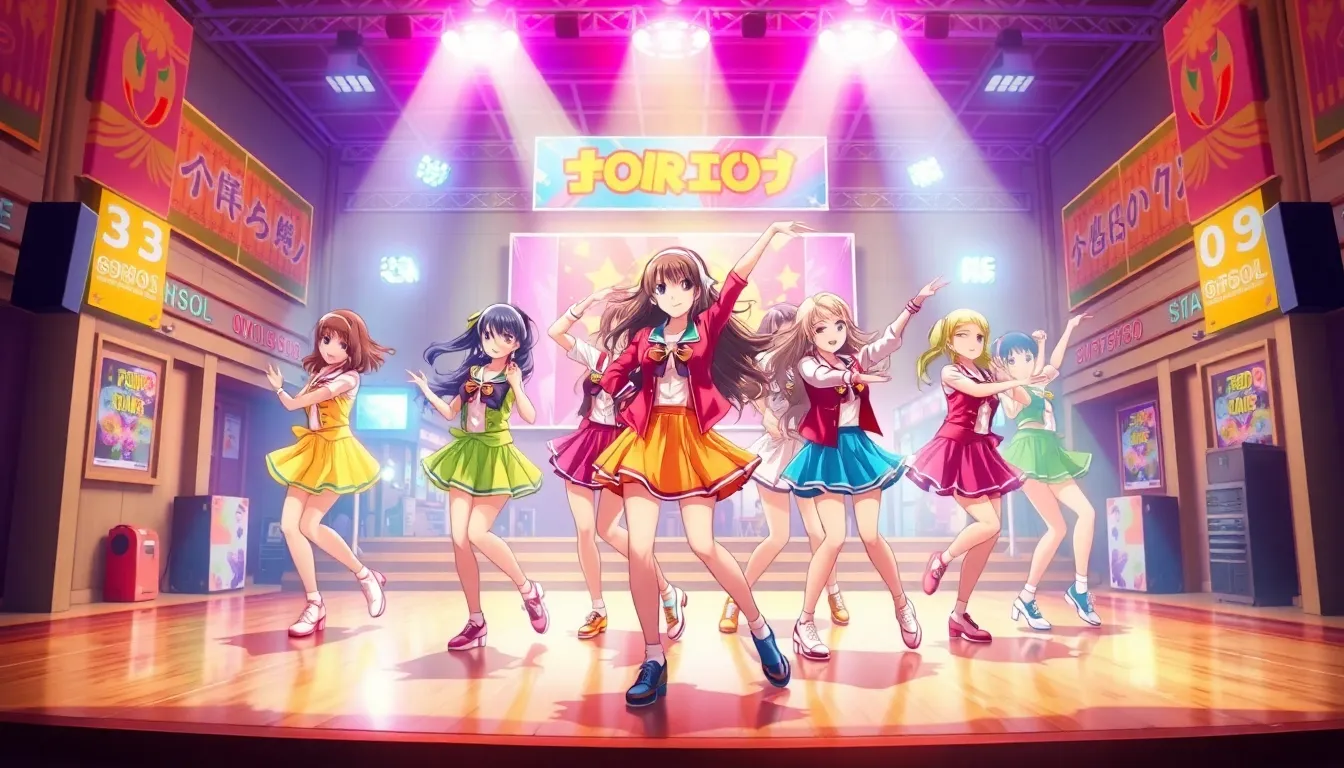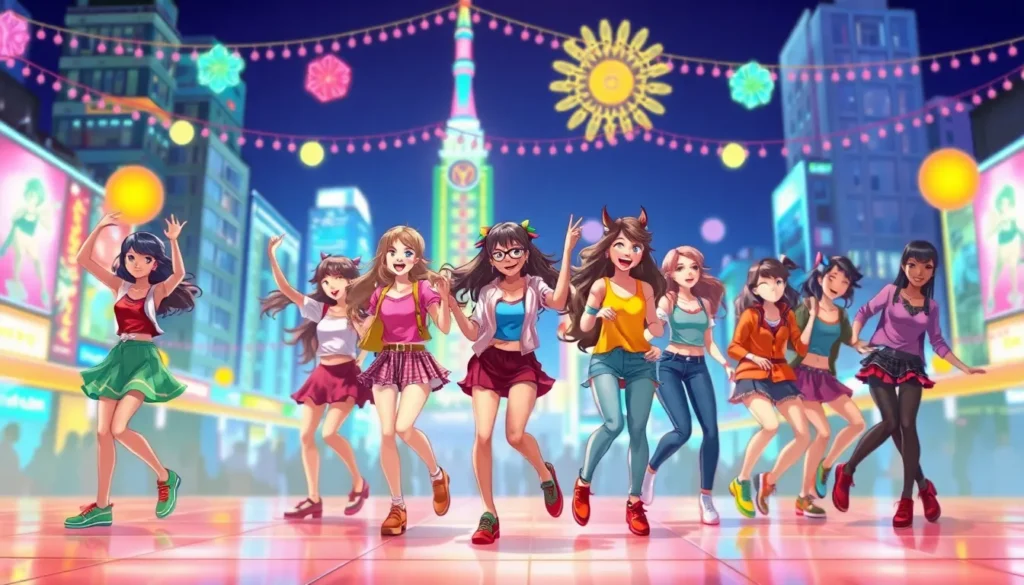In a world where rhythm meets artistry, dancing anime takes center stage, captivating fans with its vibrant visuals and infectious energy. Picture characters twirling, leaping, and busting out moves that would make even the most seasoned dancers green with envy. It’s not just about the dance; it’s about the stories, the emotions, and the sheer joy that these animated performances bring to life.
Dancing Anime
Dancing anime captures an audience through its colorful animations and dynamic choreography. Enthusiasts appreciate the depth of character emotions expressed through dance segments. Iconic series like Love Live! and K-On! showcase how music and movement intertwine to tell compelling stories. Each performance not only entertains but also enhances character development, allowing viewers to connect on a deeper level.
Dances often highlight cultural elements, reflecting various traditions and styles from around the world. The fusion of genres creates unique experiences that resonate with diverse audiences. Some series blend hip-hop, ballet, and traditional dance, offering a rich tapestry of movement.
The animation in these shows plays a pivotal role, with studios investing in high-quality visuals to ensure fluid movement. Characters often engage in performances that represent personal growth, struggles, or unity among friends. Dance battles, competition arcs, and group performances frequently serve as climactic moments in narratives.
Choreography in dancing anime has evolved, with professionals from the real world collaborating to craft intricate routines. This partnership enhances authenticity while appealing to dance enthusiasts who admire skillful execution. Community engagement around these performances often leads to fan-created content, such as dance covers and choreography breakdowns.
Overall, dancing anime stands out for its ability to combine visual art, storytelling, and movement. Its influence extends beyond Japan, inspiring a global appreciation for animated dance. Fans eagerly anticipate each new series, knowing it may deliver unforgettable performances that celebrate the joy and artistry of dance.
Popular Dancing Anime Titles

Dancing anime captivates viewers with its unique blend of music, movement, and storytelling. Several titles have emerged as favorites, showcasing exceptional choreography and emotional resonance.
Title 1: Love Live!
Love Live! stands out as a prominent example of dancing anime. The series features high school girls forming a pop idol group to save their school from closure. Each performance blends catchy songs with intricate dance routines, fostering character growth and friendship. The show’s impact lies in its ability to inspire real-life idol culture, resulting in concerts and fan events worldwide. Engaging storylines accompany the dazzling animation, making this title a staple within the genre.
Title 2: K-On!
K-On! highlights the journey of a group of high school students forming a music club. Their shared passion for music leads to unforgettable performances filled with lively dance sequences. The series emphasizes the importance of friendship and teamwork, showcasing how music can connect individuals. Its influence extends beyond anime; many fans replicate the characters’ dances online. The charming focus on daily life and music solidifies K-On! as a beloved title in the dancing anime landscape.
Themes and Motifs in Dancing Anime
Dancing anime explores various themes and motifs that enhance storytelling and viewer engagement. These concepts dive deep into the emotional and cultural dimensions tied to dance.
Dance as Expression of Emotion
Dancing serves as a powerful vehicle for emotional expression in anime. Characters often convey feelings through choreography, creating a visual dialogue that resonates with viewers. Joy, sadness, and triumph become palpable during performances. Iconic moments, like an uplifting solo or a poignant group routine, highlight character growth and relationship dynamics. Audiences connect personally with characters as they navigate their emotional landscapes through dance. This emphasis on emotion elevates the storytelling, making it memorable and relatable.
Cultural Influences on Dance Styles
Cultural elements significantly shape dance styles in anime. Influences from traditional dances, contemporary movements, and global trends create a rich tapestry of choreography. Japanese cultural motifs appear alongside Western styles, showcasing a fusion of influences. Series like Love Live! incorporate J-Pop elements, while others draw from street dance or ballet. This blend allows dancers to express their identity, reflecting societal themes and values. As diverse cultures inform the choreography, viewers appreciate the global artistry presented in each performance.
Animation Techniques in Dancing Anime
Dancing anime thrives on innovative animation techniques that enhance storytelling and emotional resonance. Notably, studios focus on creating fluid motion to engage viewers deeply.
Fluid Motion and Choreography
Fluid motion captures the essence of dance, bringing characters to life through precise animation. Each movement reflects a dancer’s personality, showcasing their growth and struggles. Techniques like keyframe animation create dynamic transitions between poses, making performances visually captivating. Choreography often integrates various dance styles, from hip-hop to ballet. Characters’ interactions during group performances convey unity and friendship, further immersing audiences in their journey. Detailed attention to biomechanics ensures movements appear natural and compelling, captivating fans while presenting authentic dance experiences.
Use of Color and Visual Effects
Color and visual effects play crucial roles in enhancing the vibrancy of dancing anime. Bright, bold palettes evoke energy and emotion, complementing the choreography. Each scene uses lighting and effects to highlight pivotal moments in performances. Techniques like motion blur create a sense of speed, amplifying the intensity of dance sequences. Backgrounds often adapt to match the mood, enhancing the storytelling. Additionally, visual motifs often reflect characters’ inner conflicts or aspirations, making the dances resonate on a deeper level. The fusion of color and effects transforms animation into a mesmerizing art form that captivates viewers.
Conclusion
Dancing anime continues to enchant audiences with its unique blend of storytelling and movement. The artistry behind each performance not only entertains but also evokes deep emotions and connections among viewers. As the genre evolves, it embraces innovative techniques and cultural influences that enrich the narrative experience.
With iconic titles leading the charge, fans are inspired to engage with the content in creative ways. The vibrant visuals and dynamic choreography ensure that dancing anime remains a beloved aspect of the medium. As new series emerge, the joy and artistry of dance will undoubtedly continue to captivate hearts around the world.

